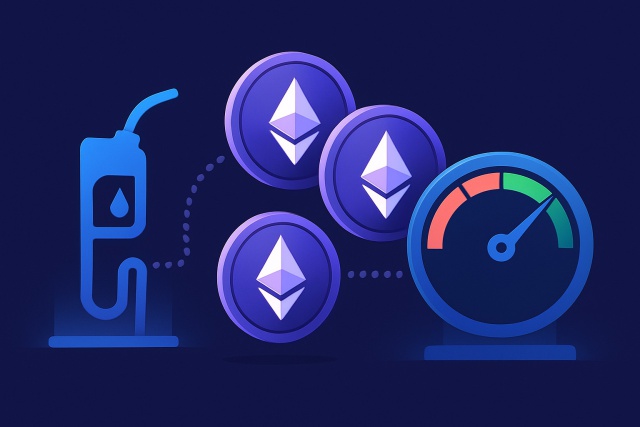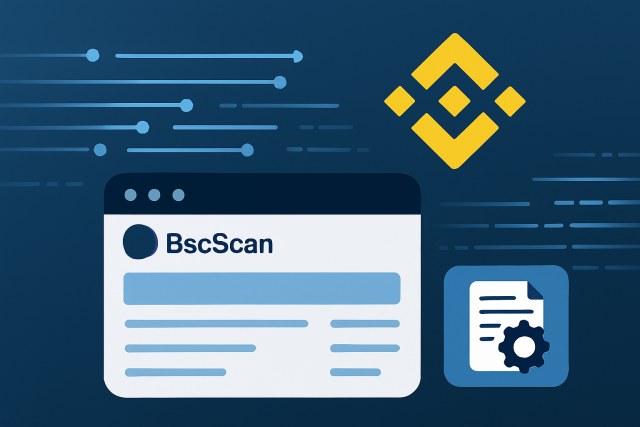Eigenlayer Explained and Its Role in Ethereum Staking


Ethereum staking has truly flipped the script on how blockchain networks handle security and consensus by having participants lock up their ETH as collateral—kind of like putting your money where your mouth is. Eigenlayer catches the eye as a clever protocol that pushes the envelope even further, finding fresh ways to squeeze more utility out of staking. Enter the idea of restaking: Eigenlayer lets stakers share their security guarantees across multiple new decentralized applications, opening doors you might not have thought possible.
So, what exactly is Eigenlayer all about?
Eigenlayer is a protocol built on Ethereum's staking ecosystem that introduces an intriguing concept called "restaking." Essentially it allows Ethereum validators to put their staked ETH security to work again by backing multiple decentralized protocols beyond the main Ethereum chain. This clever reuse opens fresh opportunities for growing the network.
- Lets validators restake their staked ETH security across multiple protocols simultaneously, making the most out of what they’ve got.
- Encourages the growth of fresh decentralized services that lean on Ethereum’s trusty validator set for their security backbone.
- Harnesses the power of existing Ethereum validators to give network security a solid boost across different layers.
- Designed with extensibility at its core, so developers have the freedom to build a variety of applications that tap into this shared security advantage.
A Quick Look at How Ethereum Staking Works With a Dash of Insight
Ethereum staking revolves around participants called validators, who put their ETH on the line as collateral to propose and verify blocks on the network. Validators earn rewards for doing their part to keep the system secure, though there’s a catch—they can also face penalties if they act maliciously or slip up. This staking method is a key player in Ethereum’s move away from the old proof-of-work grind to a shinier, more energy-efficient proof-of-stake consensus.
- To jump into the world of Ethereum as an active validator, stakers need to put down a minimum of 32 ETH—no shortcuts here.
- Validators take on the key job of proposing new blocks and double-checking that everyone else's proposals play by the rules.
- By pitching in on consensus, they help wrap up transactions smoothly and keep the network safe and sound.
- Validators should tread carefully since behaving badly or ghosting for too long can lead to some nasty slashing penalties.
- On the bright side, they earn ETH rewards for sticking to the playbook and keeping their uptime solid—something I’ve seen really pays off in the long run.
A Fresh Look at Understanding Restaking Through Eigenlayer
Restaking is at the heart of Eigenlayer's breakthrough, giving Ethereum validators the nifty ability to put their staked ETH to work beyond just the Ethereum network. Think of it as putting your money where the trust is as this extra layer of staking cranks up the value of locked ETH by letting validators use their stake as a kind of security bond for fresh decentralized services.
Restaking with Eigenlayer acts like a trusted score that multiple lenders lean on simultaneously. Validators get to recycle their staking confidence across various decentralized projects, all without having to dig up any extra resources. It is a neat way to make your trust go the extra mile.
What Exactly Gives Eigenlayer Its Edge in Ethereum Staking?
Eigenlayer takes Ethereum staking up a notch by boosting capital efficiency and stretching security coverage wider than ever. It nudges validators to back multiple decentralized services at once, which toughens the whole ecosystem's resilience. By broadening the reach of Ethereum's validator network, Eigenlayer paves the way for fresh innovation and lowers the hurdles for new protocols that need secure validation.
- Boosts validator incentives by handing out extra rewards for restaking services, making the effort feel a bit more worthwhile.
- Tightens up overall network security by bringing Ethereum's trusted validator reputation into new protocols, like adding a seasoned pro to the team.
- Improves economic efficiency by putting already staked ETH to better use—because why let good resources sit idle?
- Encourages a more decentralized infrastructure by giving smaller projects a leg up to access trusted security without jumping through too many hoops.
Possible Risks and Challenges Worth Keeping an Eye On
Eigenlayer brings some compelling advantages to the table but let’s not kid ourselves—it’s not without risks. Validators face a bigger target on their backs with slashing events that can pile up across multiple protocols like an unexpected snowball rolling downhill. Juggling responsibilities for several services increases complexity and operational headaches. To top it off, if one restaked protocol has a weak spot, it’s like dominoes falling and others could take a hit too.
- Validators run the risk of facing compounded slashing penalties if they get penalized on any protocol where their stake happens to be restaked—something that can really make your head spin.
- Smart contract bugs in Eigenlayer or the restaked applications might just lead to financial losses, which is never a fun surprise to deal with.
- Juggling duties across multiple protocols can quickly turn operations into a bit of a tangled web, demanding some serious attention and careful monitoring.
- The overall health and security of the system often hinge on validators stepping up their game and the community pulling together effectively.

How Does Eigenlayer Actually Work Under the Hood, Anyway?
Eigenlayer operates through smart contracts that team up with Ethereum validators in a pretty clever dance. Validators opt to restake by locking their already staked ETH into Eigenlayer’s contract, which then uses that stake as a kind of collateral for a bunch of other protocols. If slashing events happen on those protocols, they don’t slip through the cracks—the same validators’ staked assets keep everything in check.
A validator hooks up their already staked ETH to the Eigenlayer contract and opts into the whole restaking scene.
That staked ETH stays locked up tight and also serves as collateral for a bunch of downstream protocols all at once.
Every protocol has its own set of slashing rules which are closely monitored. If you slip up anywhere, Eigenlayer steps in to dole out the penalties.
Validators earn distinct rewards from each protocol. These rewards are then bundled together and paid out on a regular schedule—nice and tidy.
Use Cases Made Possible by Eigenlayer And Why They Might Just Be a Game Changer
By leveraging restaking Eigenlayer opens the door to a whole spectrum of decentralized services that depend on Ethereum's robust security. Think of it as the backbone supporting data availability layers which are important for rollups to function smoothly. Then you have decentralized oracle networks, those trusty messengers delivering reliable external data, and decentralized compute platforms that crank up scalable blockchain processing power.
- Offering rock-solid security guarantees for rollup chains by boosting data availability in a way that really counts.
- Backing decentralized oracle networks that bring trustworthy real-world data straight to smart contracts, no smoke and mirrors.
- Safeguarding data indexing and querying services, the unsung heroes that make blockchain analytics tick.
- Empowering community-run infrastructure projects that deliver shared decentralized services with a real grassroots vibe.
Jumping into the Eigenlayer Ride as a Validator
Ethereum validators keen on jumping into Eigenlayer have a straightforward path: just tap into the Eigenlayer smart contracts via supported user interfaces or APIs. Before you go all in with restaking, it is wise to give the slashing conditions a good once-over for each protocol you plan to back—no one wants unpleasant surprises down the line.
Connect with Eigenlayer's smart contract using an Ethereum wallet that works well with it.
Take some time to fully understand the terms, especially the tricky slashing rules and what the protocol expects from you.
When you are ready, opt into restaking by locking up your validator's staked ETH so Eigenlayer can put it to work.
Keep a close eye on your validator's performance and the various protocol roles. Staying vigilant will help you avoid penalties and maximize your rewards.
Looking Ahead to the Future and Exciting Developments of Eigenlayer
Eigenlayer is always on the move, with its current development zooming in on making the user experience not just better but smoother and more intuitive. They’re also busy weaving in more protocol integrations and beefing up security models to keep everything locked down tight. The upcoming upgrades aim to spice things up by expanding the variety and resilience of protocols that benefit from restaking—a move that fits snugly with Ethereum’s vision for networks that are more scalable and better connected.
"Restaking with Eigenlayer represents a pretty big shift in blockchain security, giving validators the chance to boost their sway without having to throw more capital into the pot. It strikes me as a rather clever approach to making infrastructure both more decentralized and sturdier than what we usually see in the crypto world these days." – Eigenlayer Developer Team
Frequently Asked Questions
What are the risks of restaking with Eigenlayer?
Restaking does come with extra slashing risk because if a validator slips up in any restaked protocol the penalties stack across all of them. It is like juggling multiple fragile glass balls at once. On top of that there are the usual suspects — smart contract vulnerabilities and the tricky business of managing several protocols simultaneously. Validators really need to stay sharp, keep a close eye on their tasks and thoroughly vet each protocol before they jump in headfirst.
Can I restake with less than 32 ETH?
Nope, Eigenlayer sticks to Ethereum's established minimum of 32 ETH for validators. However if you’re on the smaller side all is not lost — you can still get involved through pooled options like liquid staking tokens that meet the minimum threshold. Just a heads up though these methods often come with extra trust factors to consider so it’s worth weighing those carefully.
How does Eigenlayer improve capital efficiency for validators?
Eigenlayer lets validators put their staked ETH to work multiple times by backing several protocols simultaneously. This means earning rewards from various sources without pouring in additional funds. It is like getting more bang for your buck on your initial stake while also helping secure a broader slice of the ecosystem. Not too shabby, right?
What types of protocols can benefit from Eigenlayer's restaking?
Data availability layers, decentralized oracles and compute platforms are right up Eigenlayer's alley. Any service that relies on trustless validation — think rollups or indexing networks — can tap into Ethereum’s validator set instead of building their own security from scratch. It’s a neat way to leverage existing strength and save time.
How do I start restaking as an existing Ethereum validator?
It’s pretty straightforward: you connect your validator wallet to Eigenlayer’s smart contracts using the supported interfaces and take a good hard look at the slashing conditions for each protocol before opting in. Here’s the kicker — keeping tabs on your performance across all protocols is key to sidestepping penalties. Don’t worry, tools to help juggle these duties are on the horizon and should make life easier down the road.
Start Your Crypto Journey with Coinbase Today
Ready to enter the cryptocurrency market but unsure where to begin? Coinbase makes buying, selling, and storing digital assets simple and secure for beginners and experts alike.








